Neural Network Based on Multi-Scale Saliency Fusion for Traffic Signs Detection
Abstract
1. Introduction
- (1)
- We combined the YOLOv5 network with ShuffleNet-v2, BIFPN, and CA mechanisms to propose the YOLO-FAM network, which solved the problem of traffic sign recognition in complex environments.
- (2)
- We conduct experimental evaluations to demonstrate the performance of the algorithm. Experimental results show that our algorithm performs close to optimality and outperforms many algorithms in realistic scenes.
2. Methodology
2.1. ShuffleNet v2 Network Structure
2.2. Bi-FPN Network Structure
2.3. CA Attention Mechanism
2.4. YOLOv5 Loss Function Improvement
3. Dataset and Experiment Setup
3.1. Image Dataset
3.2. Hardware Environment
3.3. Evaluation Indicators
4. Experimental Results
4.1. Dataset Detection Results
4.2. Performance Comparison
4.3. Ablation Experiment
4.4. GTSDB Dataset Experimental Results
5. Conclusions
Author Contributions
Funding
Institutional Review Board Statement
Informed Consent Statement
Data Availability Statement
Conflicts of Interest
References
- Gudigar, A.; Chokkadi, S. A review on automatic detection and recognition of traffic sign. Multimedia Tools Appl. 2014, 75, 333–364. [Google Scholar] [CrossRef]
- Piccioli, G.; De Micheli, E.; Parodi, P.; Campani, M. Robust method for road sign detection and recognition. Image Vis. Comput. 1996, 14, 209–223. [Google Scholar] [CrossRef]
- Tsai, Y.; Kim, P.; Wang, Z. Generalized traffic sign detection model for developing a sign inventory. J. Comput. Civ. Eng. 2009, 23, 266–276. [Google Scholar] [CrossRef]
- Yuan, X.; Hao, X.; Chen, H.; Wei, X. Robust traffic sign recognition based on color global and local oriented edge magnitude patterns. IEEE Trans. Intell. Transp. Syst. 2014, 15, 1466–1477. [Google Scholar] [CrossRef]
- Li, H.; Sun, F.; Liu, L.; Wang, L. A novel traffic sign detection method via color segmentation and robust shape matching. Neurocomputing 2015, 169, 77–88. [Google Scholar] [CrossRef]
- De La Escalera, A.; Moreno, L.E.; Salichs, M.A.; Armingol, J.M. Road traffic sign detection and classification. IEEE Trans. Ind. Electron. 1997, 44, 848–859. [Google Scholar] [CrossRef]
- Khan, J.F.; Bhuiyan SM, A.; Adhami, R.R. Image segmentation and shape analysis for road-sign detection. IEEE Trans. Intell. Transp. Syst. 2010, 12, 83–96. [Google Scholar] [CrossRef]
- Perez, F.; Koch, C. Toward color image segmentation in analog VLSI: Algorithm and hardware. Int. J. Comput. Vis. 1994, 12, 17–42. [Google Scholar] [CrossRef]
- Greenhalgh, J.; Mirmehdi, M. Real-time detection and recognition of road traffic signs. IEEE Trans. Intell. Transp. Syst. 2012, 13, 1498–1506. [Google Scholar] [CrossRef]
- Shustanov, A.; Yakimov, P. CNN design for real-time traffic sign recognition. Procedia Eng. 2017, 201, 718–725. [Google Scholar] [CrossRef]
- Jin, J.; Fu, K.; Zhang, C. Traffic sign recognition with hinge loss trained convolutional neural networks. IEEE Trans. Intell. Transp. Syst. 2014, 15, 1991–2000. [Google Scholar] [CrossRef]
- Girshick, R.; Donahue, J.; Darrell, T.; Malik, J. Rich Feature Hierarchies for Accurate Object Detection and Semantic Segmentation. In Proceedings of the IEEE Conference on Computer Vision and Pattern Recognition, Columbus, OH, USA, 23–28 June 2014; pp. 580–587. [Google Scholar] [CrossRef]
- Maldonado-Bascón, S.; Lafuente-Arroyo, S.; Gil-Jimenez, P.; Gómez-Moreno, H.; López-Ferreras, F. Road-sign detection and recognition based on support vector machines. IEEE Trans. Intell. Transp. Syst. 2007, 8, 264–278. [Google Scholar] [CrossRef]
- Redmon, J.; Divvala, S.; Girshick, R.; Farhadi, A. You only look once: Unified, real-time object detection. In Proceedings of the IEEE Conference on Computer Vision and Pattern Recognition, Las Vegas, NV, USA, 27–30 June 2016; pp. 779–788. [Google Scholar]
- Liu, W.; Anguelov, D.; Erhan, D.; Szegedy, C.; Reed, S.; Fu, C.Y.; Berg, A.C. Ssd: Single shot multibox detector. European conference on computer vision. In European Conference on Computer Vision; Springer: Cham, Switzerland, 2016; pp. 21–37. [Google Scholar]
- Ren, S.; He, K.; Girshick, R.; Sun, J. Faster r-cnn: Towards real-time object detection with region proposal networks. Adv. Neural Inf. Process. Syst. 2015, 28, 1137–1149. [Google Scholar]
- Neubeck, A.; Van Gool, L. Efficient non-maximum suppression. Int. Conf. Pattern Recognit. 2006, 3, 850–855. [Google Scholar]
- Wang, Z.; Guo, H. Research on traffic sign detection based on convolutional neural network. In Proceedings of the 12th International Symposium on Visual Information Communication and Interaction, Shanghai, China, 20–22 September 2019; pp. 1–5. [Google Scholar]
- Gong, C.; Li, A.; Song, Y.; Xu, N.; He, W. Traffic Sign Recognition Based on the YOLOv3 Algorithm. Sensors 2022, 22, 9345. [Google Scholar] [CrossRef]
- Ma, N.; Zhang, X.; Zheng, H.-T.; Sun, J. ShuffleNet V2: Practical Guidelines for Efficient CNN Architecture Design. In Proceedings of the European Conference on Computer Vision (ECCV), Munich, Germany, 8–14 September 2018; pp. 116–131. [Google Scholar] [CrossRef]
- Tan, M.; Pang, R.; Le, Q.V. Efficientdet: Scalable and efficient object detection. In Proceedings of the IEEE/CVF Conference on Computer Vision and Pattern Recognition, Seattle, WA, USA, 13–19 June 2020; pp. 10781–10790. [Google Scholar]
- Zhang, J.; Zou, X.; Kuang, L.D.; Wang, J.; Sherratt, R.S.; Yu, X. CCTSDB 2021: A more comprehensive traffic sign detection benchmark. Hum.-Cent. Comput. Inf. Sci. 2022, 12, 23. [Google Scholar]
- Stallkamp, J.; Schlipsing, M.; Salmen, J.; Igel, C. The German traffic sign recognition benchmark: A multi-class classification competition. In Proceedings of the 2011 International Joint Conference on Neural Networks, San Jose, CA, USA, 31 July–5 August 2011; pp. 1453–1460. [Google Scholar]
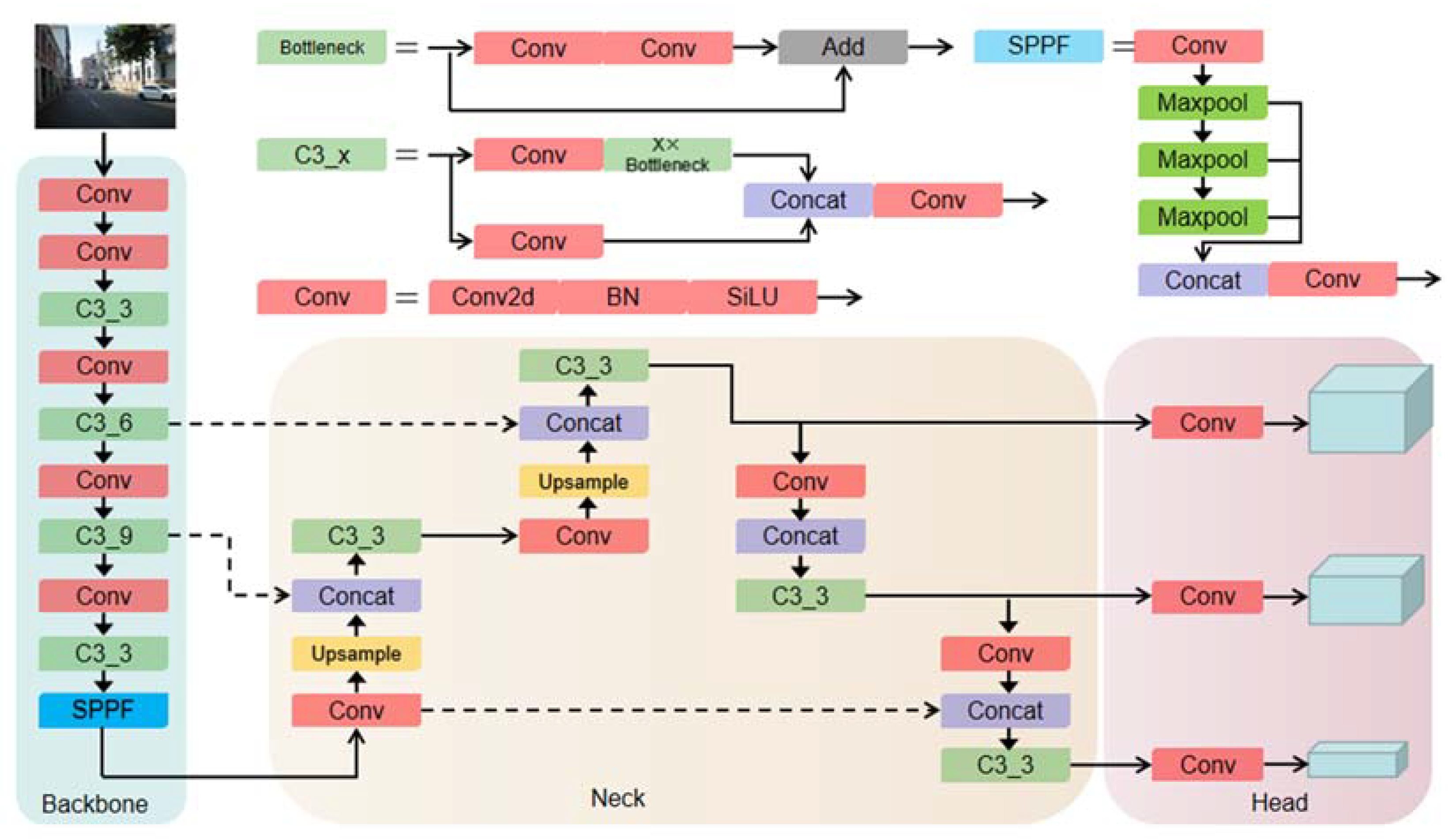
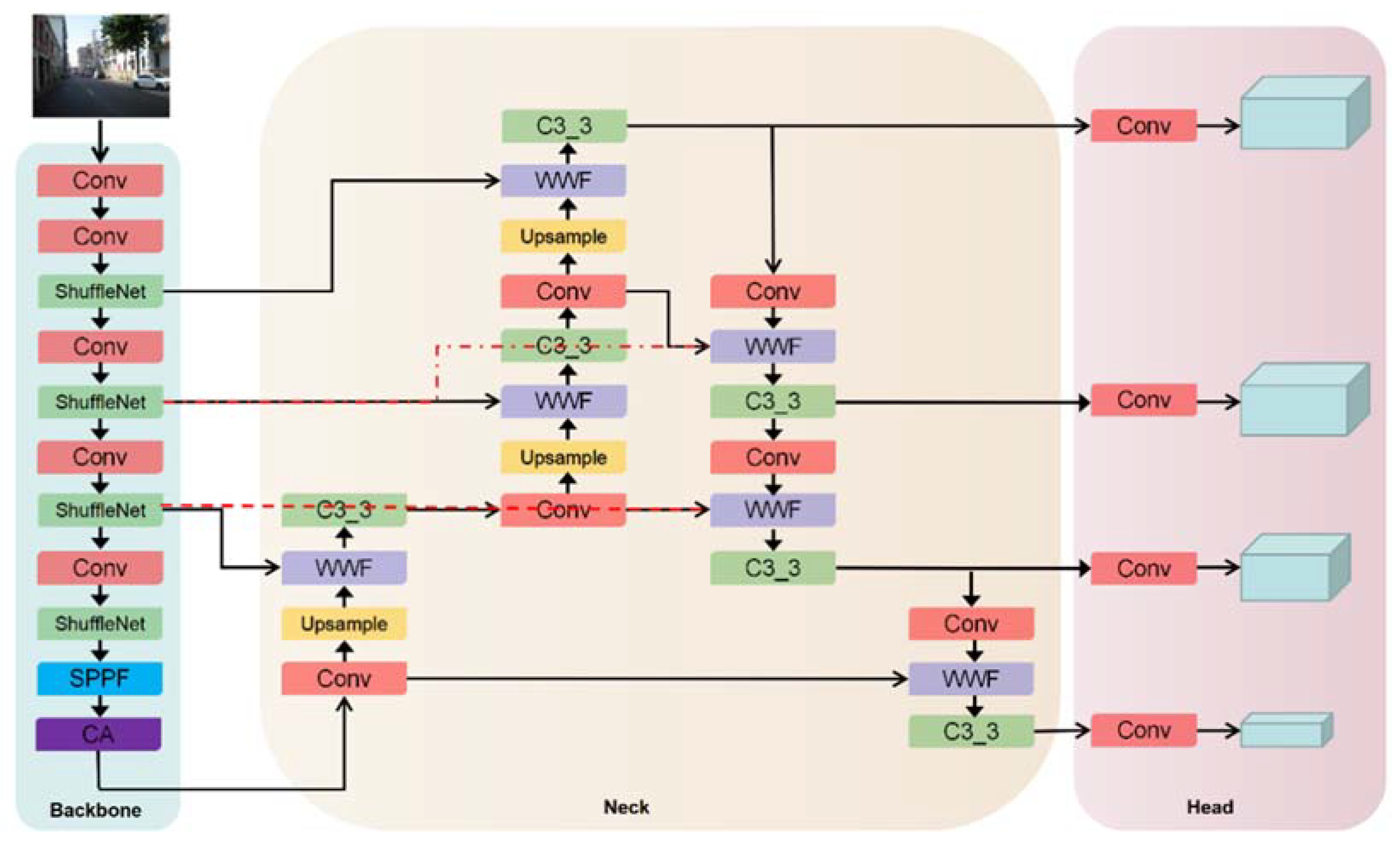
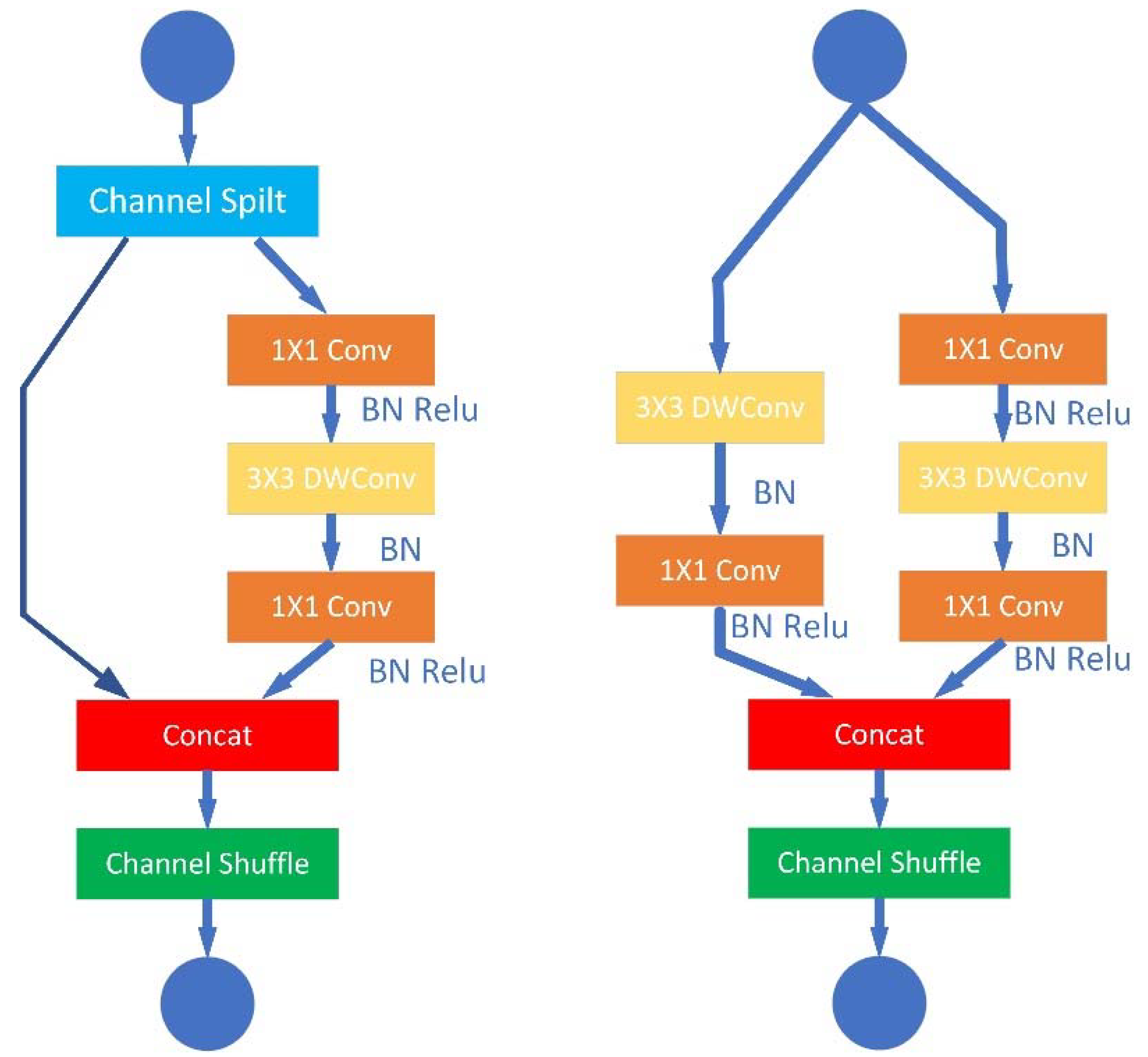
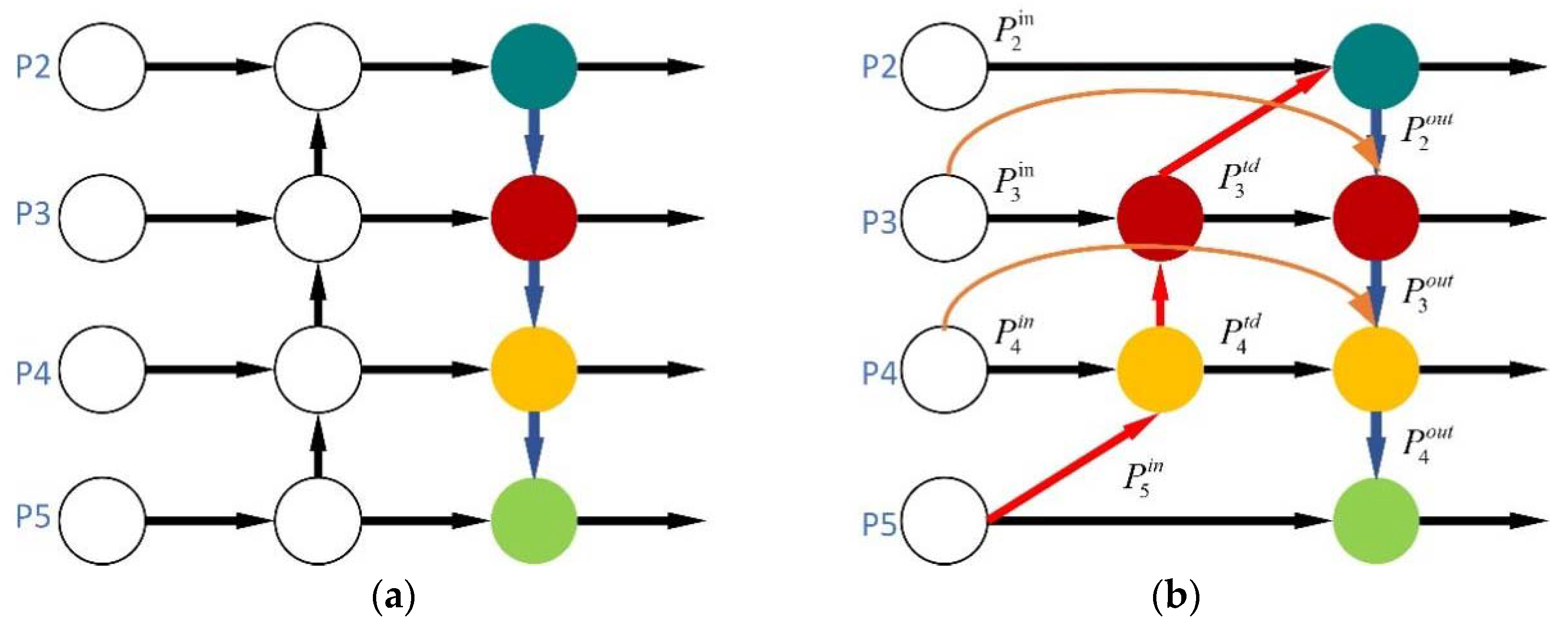
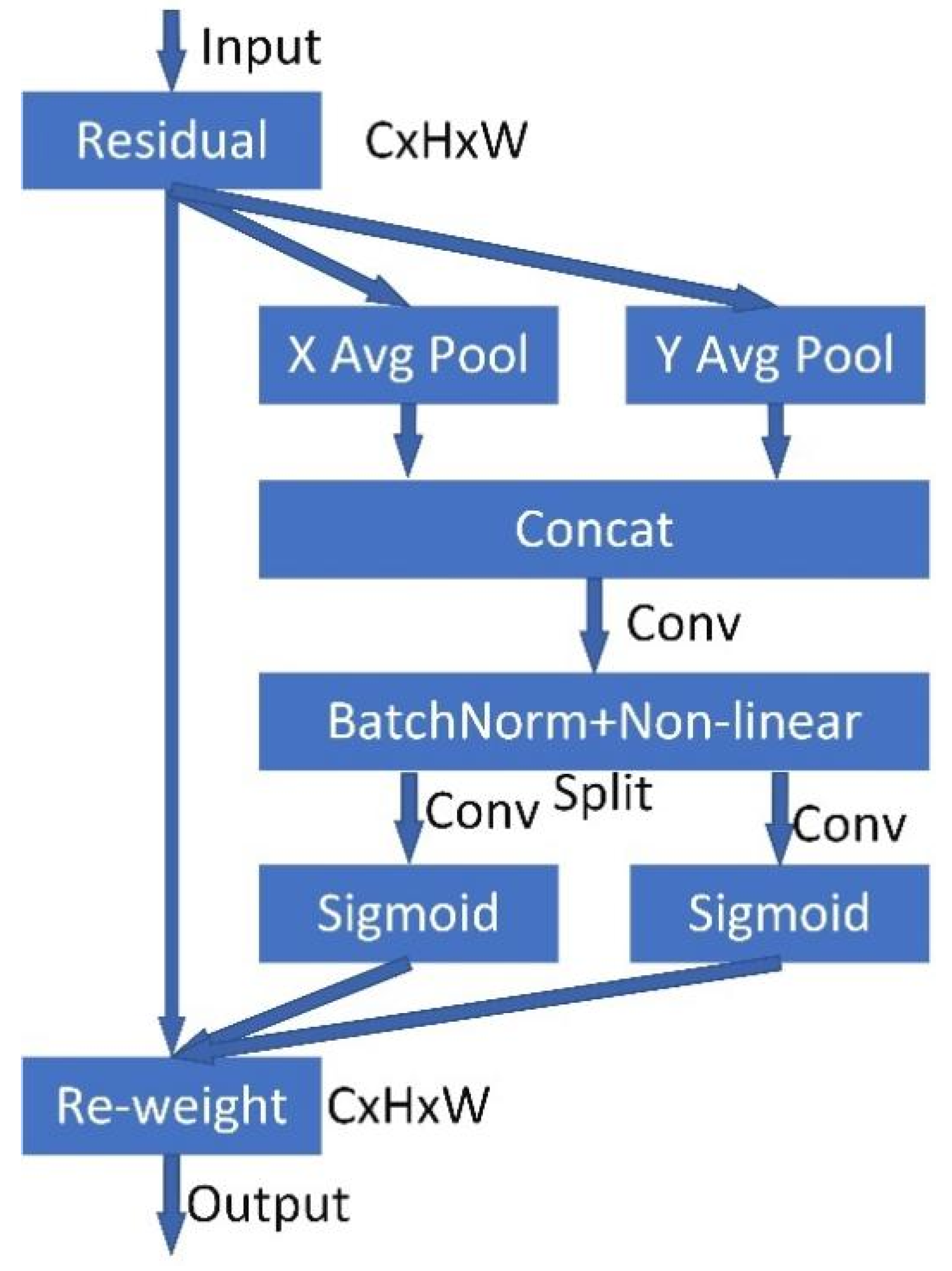

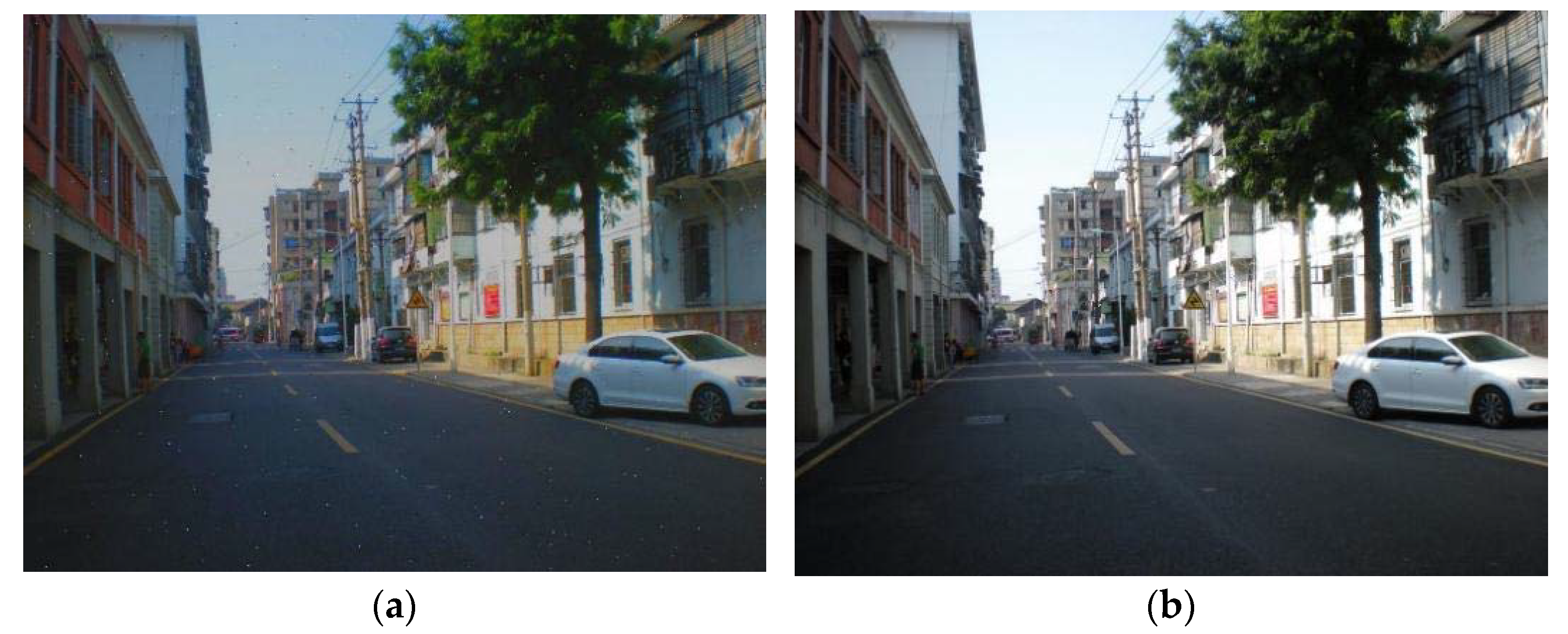
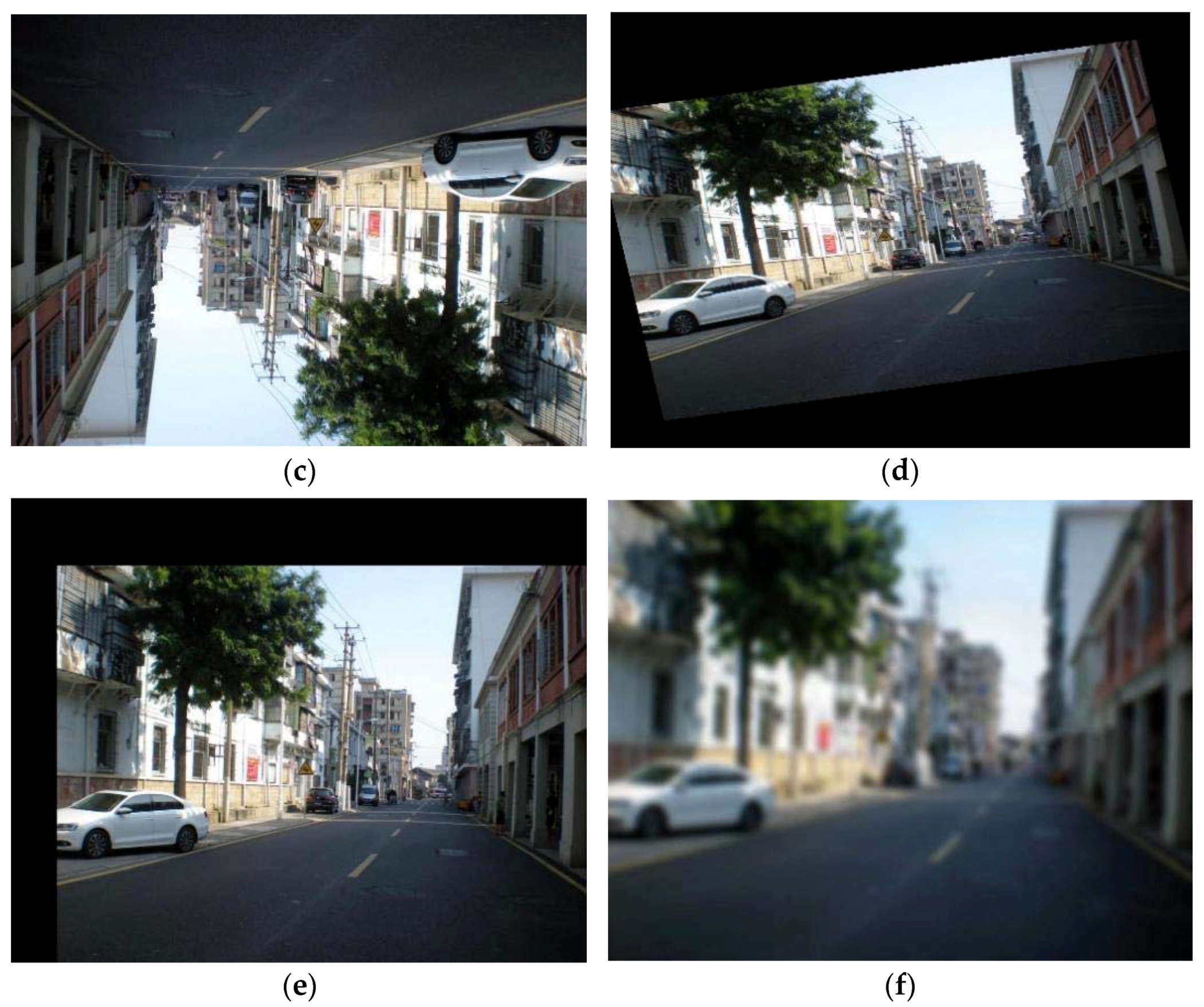
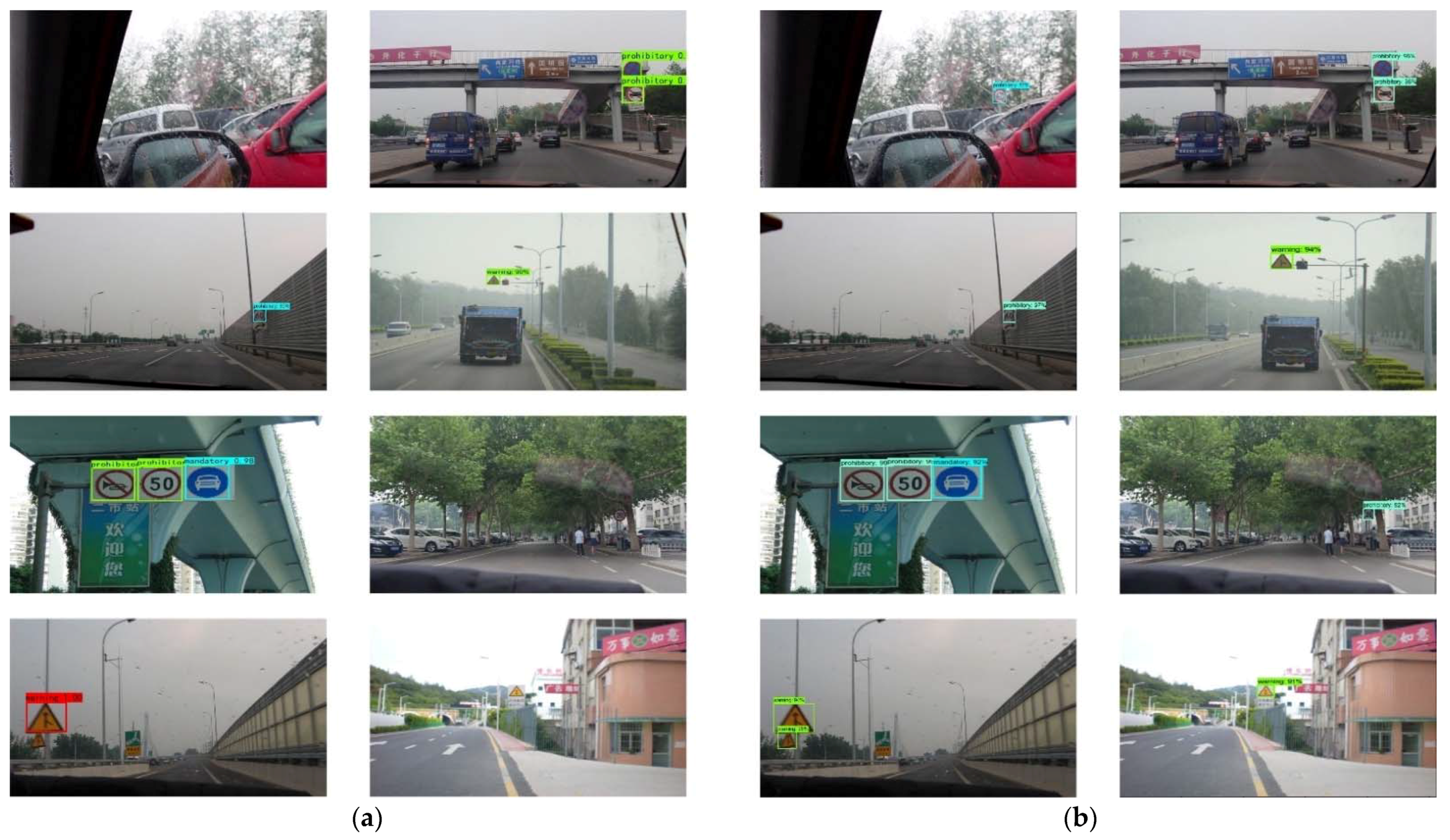
| Model | mAP | FPS | FLOPs (G) |
|---|---|---|---|
| Faster-RCNN | 89.16 | 17 | 535.7 |
| YOLOv3 | 83.76 | 29.6 | 66.5 |
| YOLOv4 | 88.24 | 41.2 | 60.2 |
| YOLOv5 | 86.25 | 94.2 | 9.5 |
| YOLOv3-Tiny | 67.21 | 79 | 6.1 |
| YOLOv4-Tiny | 73.43 | 95 | 6.9 |
| YOLO-FAM | 88.52 | 83.3 | 8.2 |
| Methods | mAP (%) | FPS (f/s) | FLOPs (G) |
|---|---|---|---|
| YOLOv5 | 89.2 | 95.0 | 12.5 |
| YOLOv5 + ShuffleNet-v2 | 89.4 | 98.5 | 10.5 |
| YOLOv5 + ShuffleNet-v2 + BIFPN | 90.2 | 99.5 | 9.2 |
| YOLOv5 + ShuffleNet-v2 + BIFPN + CA | 92.4 | 100.1 | 8.5 |
| YOLOv5 + ShuffleNet-v2 + BIFPN + CA + EIOU | 92.5 | 95.5 | 8.9 |
| Methods | mAP (%) | FPS (f/s) |
|---|---|---|
| YOLOv4 | 83.75 | 65.5 |
| YOLOv5 | 84.68 | 98.6 |
| YOLOv4-Tiny | 61.45 | 80.2 |
| YOLO-FAM | 87.82 | 89.2 |
Publisher’s Note: MDPI stays neutral with regard to jurisdictional claims in published maps and institutional affiliations. |
© 2022 by the authors. Licensee MDPI, Basel, Switzerland. This article is an open access article distributed under the terms and conditions of the Creative Commons Attribution (CC BY) license (https://creativecommons.org/licenses/by/4.0/).
Share and Cite
Zou, H.; Zhan, H.; Zhang, L. Neural Network Based on Multi-Scale Saliency Fusion for Traffic Signs Detection. Sustainability 2022, 14, 16491. https://doi.org/10.3390/su142416491
Zou H, Zhan H, Zhang L. Neural Network Based on Multi-Scale Saliency Fusion for Traffic Signs Detection. Sustainability. 2022; 14(24):16491. https://doi.org/10.3390/su142416491
Chicago/Turabian StyleZou, Haohao, Huawei Zhan, and Linqing Zhang. 2022. "Neural Network Based on Multi-Scale Saliency Fusion for Traffic Signs Detection" Sustainability 14, no. 24: 16491. https://doi.org/10.3390/su142416491
APA StyleZou, H., Zhan, H., & Zhang, L. (2022). Neural Network Based on Multi-Scale Saliency Fusion for Traffic Signs Detection. Sustainability, 14(24), 16491. https://doi.org/10.3390/su142416491









